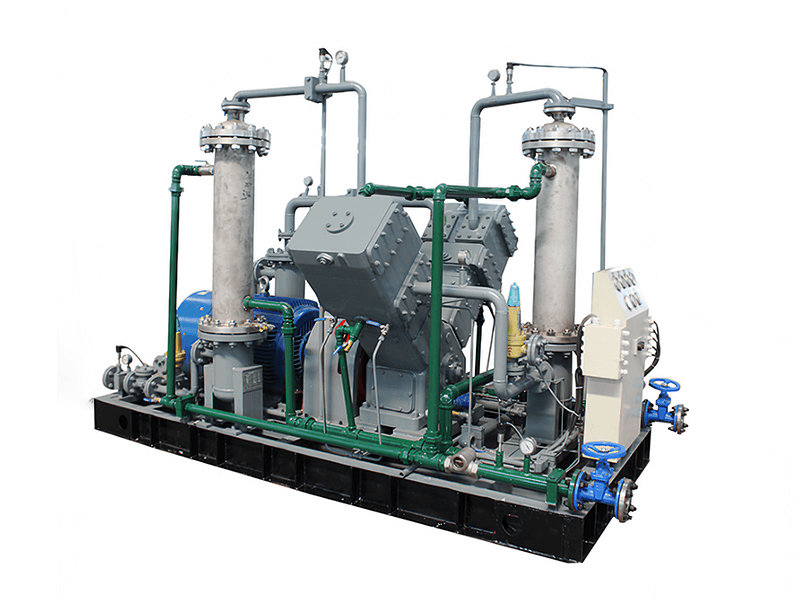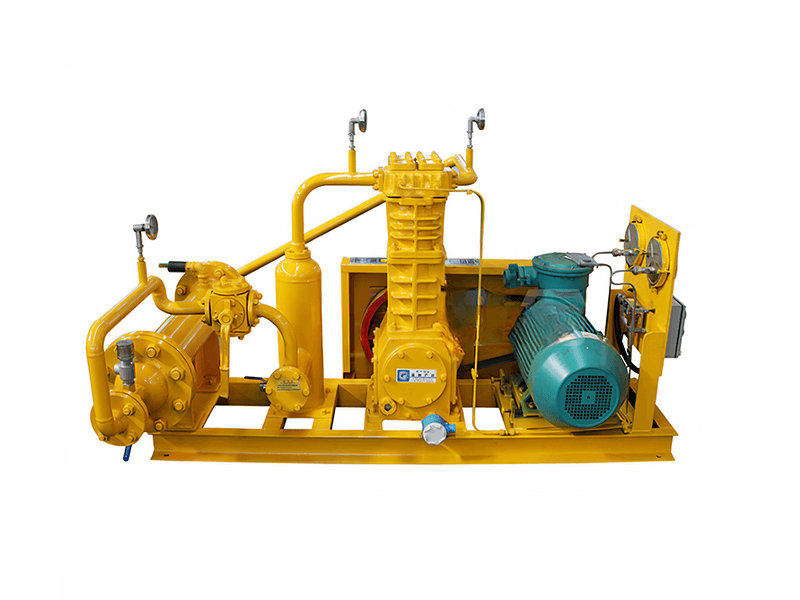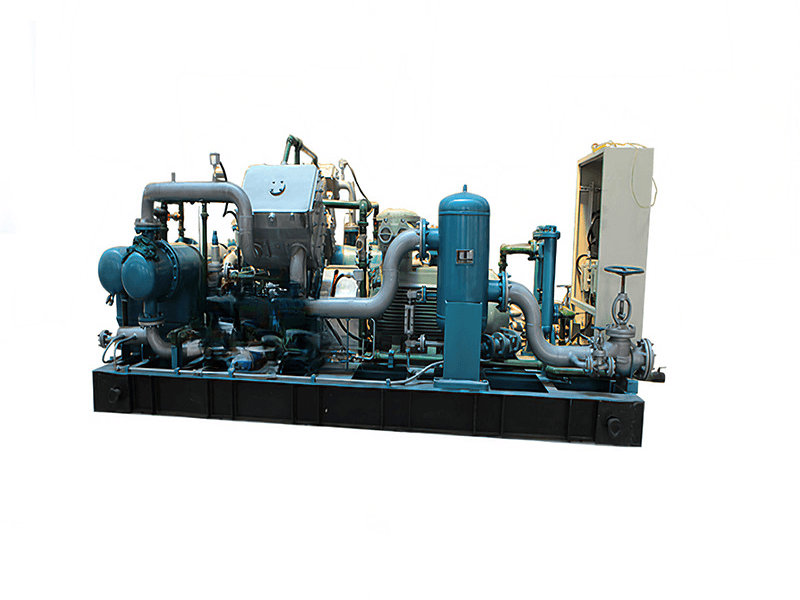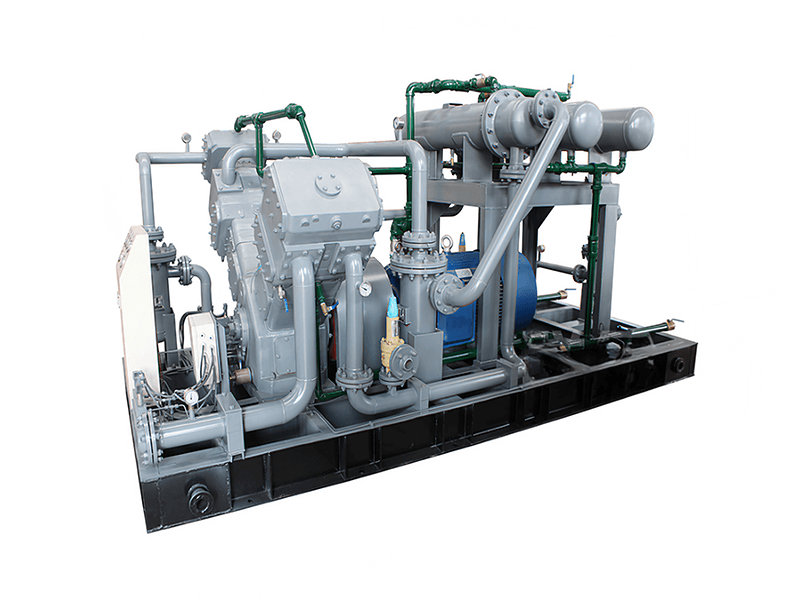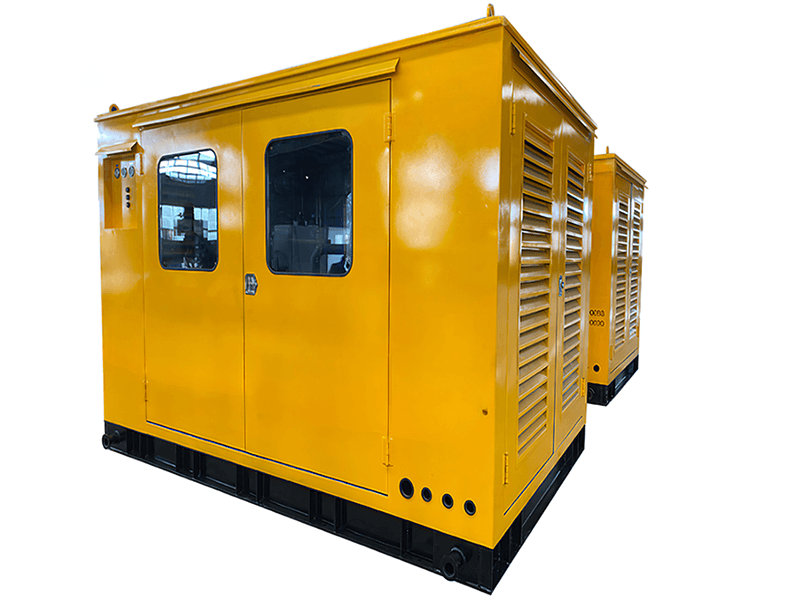With the advancement of global carbon neutrality targets, carbon capture, utilization and storage (CCUS) technology has become a core means to reduce industrial carbon emissions. Among them, high-pressure transportation of carbon dioxide (CO₂) is a key link to realize large-scale sequestration or oil-driven utilization, and piston compressors, as the core equipment for high-pressure gas transportation, face unique challenges in CO₂ phase control, safety and energy efficiency. This paper focuses on the engineering requirements of CO₂ high-pressure gas transportation, analyzes the key technical difficulties of piston compressors, and discusses their design optimization and future development direction with typical project examples at home and abroad.
I. Technical characteristics and challenges of CO₂ high-pressure transportation
The physical properties of CO₂ are significantly different from natural gas, its critical point is 7.38MPa, 31.1 ℃, in the high-pressure transport often supercritical or dense phase state, which puts forward special requirements for the compressor design:
Phase control: It is necessary to avoid the vaporization of liquid CO₂ or the formation of solid dry ice during the compression process, otherwise cavitation or equipment damage may be triggered.
Material compatibility: CO₂ is easy to combine with moisture to form carbonic acid under high pressure, which can corrode metal parts; at the same time, supercritical CO₂ is highly permeable to sealing materials.
Safety risks: CO₂ is dense, non-toxic but can cause asphyxiation, and tends to accumulate in low-lying areas in the event of a leak, requiring enhanced sealing and monitoring systems.
Conventional natural gas compressor designs are not directly adaptable and need to be optimized for the purpose.
II. Key Technologies of Piston Compressor in CO₂ High Pressure Transportation
1. Material selection and surface treatment
Corrosion-resistant alloys: Cylinders and valves are made of duplex stainless steel (e.g. 2205) or nickel-based alloy (Inconel 625) to resist carbonic acid corrosion.
Coating technology: The piston rod surface is sprayed with tungsten carbide (WC) or diamond-like (DLC) coating to reduce the coefficient of friction and enhance wear resistance.
Non-metallic seals: Perfluoroethylene ether rubber (FFKM) or polytetrafluoroethylene (PTFE) composites are used to enhance resistance to CO₂ penetration.
2. Multi-stage compression and inter-stage cooling optimization
Phase stability control: through 4~6 stages of compression, the compression ratio of each stage is controlled within 2:1, together with inter-stage water cooling or air cooling, to ensure that the CO₂ is always in supercritical or dense phase state.
Dynamic temperature monitoring: infrared temperature sensors are installed at the outlet of each stage to adjust the cooling amount in real time to avoid the temperature falling below -56℃ (the critical point of dry ice formation).
3. Intelligent control system
Adaptive valve adjustment: Based on the analysis of pressure-volume (PV) curve, dynamically adjust the valve opening and closing time sequence to reduce the risk of “liquid shock”.
Leakage monitoring network: CO₂ concentration sensor and laser methane detector (CO₂ spectrum can be adapted) are arranged in the compressor room to link up with the emergency shutdown system.
4. Special structure design
Double-acting cylinder: adopting two-way compression structure, improving the efficiency of single machine by more than 20%.
Low inertia crankshaft: reduce vibration amplitude and avoid bolt loosening under high frequency load.

III. Typical Project Example Analysis
Case 1: Sleipner CO₂ Storage Project in Norway
Background: The world's first commercial-scale submarine CO₂ storage project, with an annual storage capacity of about 1 million tons and a delivery pressure of 15 MPa.
Technical Program:
A three-stage electric driven piston compressor is used, with seawater heat exchanger for inter-stage cooling and outlet temperature control at 40°C.
The inner wall of the cylinder is chromium-plated, and the piston ring uses carbon fiber reinforced polyether ether ether ketone (PEEK).
Results: 10 years of continuous operation without major corrosion failures, system availability of 99.2%.
Case 2: CCUS Demonstration Project in Shengli Oilfield, China
Challenge: The source of CO₂ is flue gas from a coal-fired power plant, which contains impurities (NOx, SO2) and large pressure fluctuations.
Innovative design:
Pre-purification module: Integrated amine desulfurization and molecular sieve dehydration to achieve 99.9% CO₂ purity.
Variable speed drive: The compressor is equipped with a permanent magnet synchronous motor, which automatically adjusts the speed according to the front-end pressure (range 30%~110%).
Operating data: 500,000 tons of CO₂ compressed per year, energy consumption 18% lower than traditional solutions.
Case 3: Boundary Dam Carbon Capture Project, Canada
Requirements: CO₂ is used to drive oil, the delivery pressure needs to be increased from 2MPa to 20MPa, and it needs to be adapted to frequent starts and stops.
Solution:
Adopt a modular piston compressor unit with a single power of 3MW, supporting parallel expansion.
Introduced digital twin technology: predicted valve wear cycles through virtual modeling and replaced spare parts in advance.
Benefits: 25% reduction in maintenance costs and 90% reduction in unplanned downtime.
IV. Technical Challenges and Response Strategies
1. Seal failure under high pressure
Problem: Supercritical CO₂ is highly permeable, easily leading to packing box leakage.
Countermeasure: Adopt “metal + graphite” combination sealing ring with online leakage compensation system.
2. Impurities
Problem: The particles carried in the flue gas accelerate the cylinder wear.
Countermeasure: Install cyclone separator and ceramic filter at the air inlet end, with an accuracy of 1μm.
3. Economy bottleneck
Problem: High-alloy materials and control system push up the initial investment.
Countermeasure: Promote standardized module design and reduce costs through large-scale production.
V. Future Development Trends
Ultra-high-pressure transmission technology: R&D of compressor units above 30MPa to support the demand for deep saline aquifer storage.
Green power drive integration: coupling photovoltaic/wind power, developing “zero carbon compressor station”.
Hydrogen-CO₂ hybrid transportation: explore the suitability of compressor materials and sealing technology under hydrogen doping conditions.
AI operation and maintenance platform: using machine learning to predict the life of key components and realize preventive maintenance.
Conclusion
Piston compressors have demonstrated irreplaceable technological advantages in high-pressure CO₂ transportation, but their design needs to address the challenges of phase control, material corrosion, and safety monitoring. Practices from Sleipner to Shengli Oilfield show that piston compressors can meet the high efficiency and reliability requirements of CCUS projects through material innovation, multi-stage cooling optimization and intelligent upgrading. In the future, with the integration of UHP technology and renewable energy, this equipment will play a more central role in the global carbon emission reduction process.














